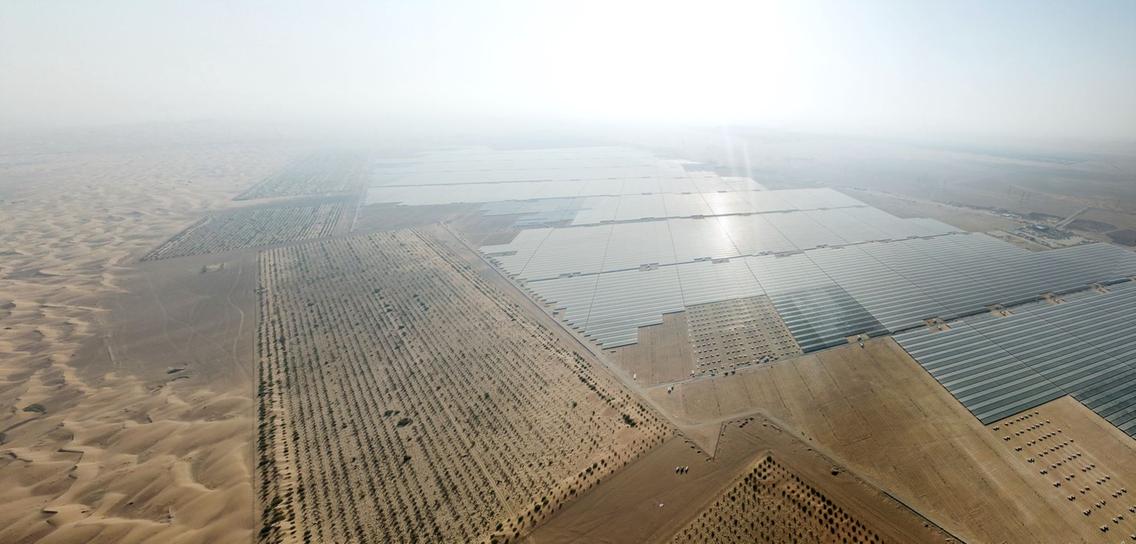Abu Dhabi – the capital of the United Arab Emirates – is set to build the world’s most cost-effective solar farm ever, costing 1.35 cents per kilowatt hours (kWh) of energy produced. The current cheapest solar farm is owned by the UAE’s other major city, Dubai, which set the cost record in 2015 at 5.98¢/kWh and then broke it again in 2016 at 2.99¢/kWh. Abu Dhabi’s new record-setting project crushes those efficiency marks and is set to be completed in 2022.

This new breakthrough in solar cost efficiency can be credited to many factors. Solar technology continues to improve around the world, making it cheaper and more powerful. The UAE government has invested significantly in solar technology, facilitating its development through research, low-cost financing, and other measures. The UAE is also almost perfectly suited for solar geographically. It gets tons of sunlight and has vast expanses of flat, empty land.
According to Abu Dhabi Power Corporation, the project will add 2GW of energy, which enough for 160,000 homes, building on a 1.2 GW solar farm near the city. It will remove 3.6 million metric tons of carbon emissions from the air per year, roughly equivalent to removing 720,000 cars from the road.
Sometimes it feels like we hear about some new solar breakthrough every month now. A new efficiency record here. A new largest solar installation there. A new groudbreaking technology over there. On one hand, this is what you’d expect from a developing technology like solar photovoltaics. They are naturally going to get cheaper and more powerful over time.
That makes it easy to lose sight of just how far we’ve come and how quickly. Dubai’s 2015 record efficiency was thought of as truly monumental at the time, even “shocking” according to CleanTechnica. The new solar farm in Abu Dhabi will be over four times more efficient, just five years later. The speed and degree of improvement is mind-boggling.
It makes me think: Where will be just five years from now? Imagine the time when solar is so cheap that even thinking about developing non-renewable sources of energy is unthinkable. We might not be far off.
Subscribe
Our newsletter featuring good news from around the world
The latest laws, policies, science, and technology leading the way toward our brighter future


